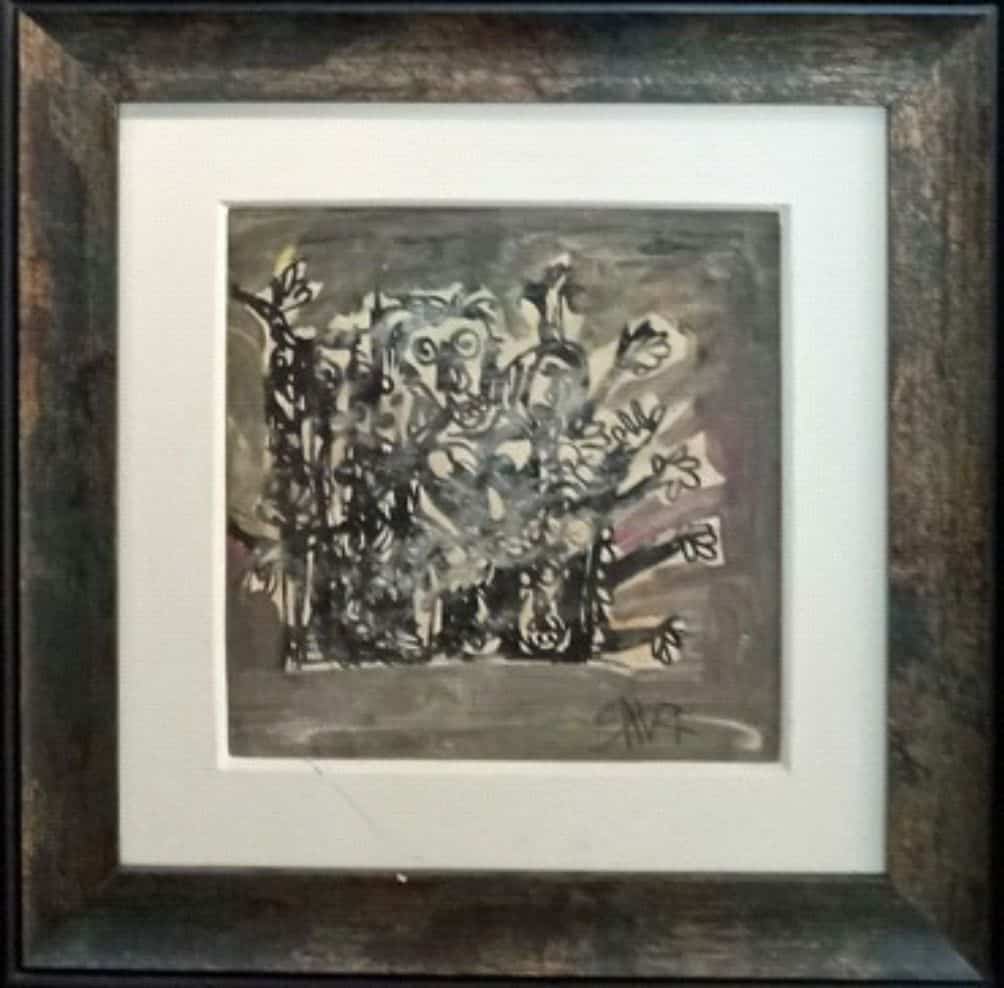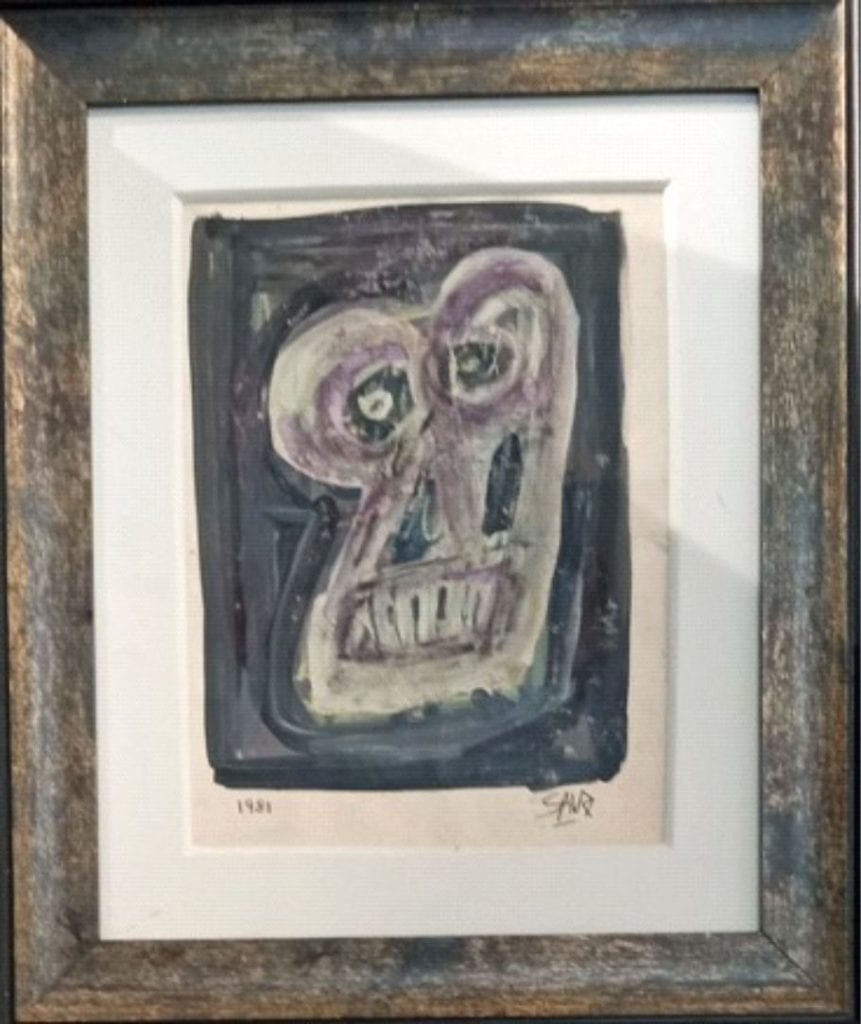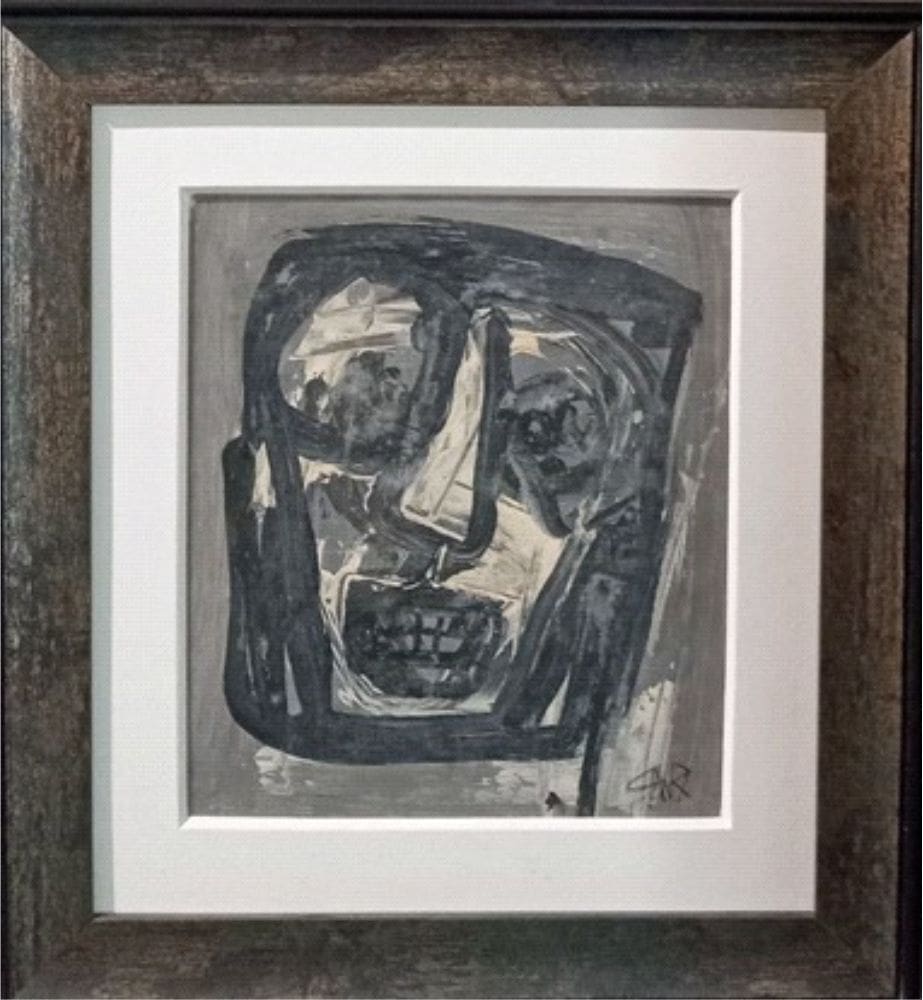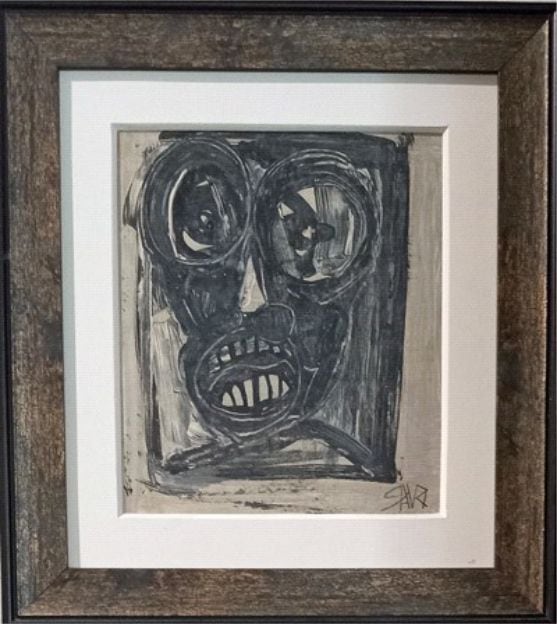
Antonio Saura Atarés was a Spanish artist and writer, one of the major post-war painters to emerge in Spain in the fifties whose work has marked several generations of artists and whose critical voice is often remembered.
In the 1950s and 1960s, he made a series of paintings of a crucifixion scene that recall Velázquez’s own 1632 composition at the Prado.
Saura’s limited palette, constrained brushstrokes, and gruesome subject matter also evoke Pablo
Picasso’s work of the late 1930s, especially the monochromatic Guernica (1937).

Saura, like Picasso, was struck by the photographs of the bombing of the Basque capital, but Saura’s expressive brushstrokes more directly index his emotional response to wartime death and destruction. In 1957 he founded the El Paso group (1957–60) with other artists based in Madrid.
The group is considered part of the wider movement of Spanish Informalism, along with the Catalonian group Dau al Set (Seventh face of the die, 1948–53) and the painter Antoni Tàpies. Before disbanding, El Paso took part in two exhibitions in New York: New Spanish Painting and Sculpture at the Museum of Modern Art and Before Picasso, After Miró at the Guggenheim Museum (both 1960).


Lot 7 of our upcoming online auction, with a starting bid of $80,000, is a men’s 18k Patek Philippe Nautilus Baguette Diamond Watch. It features 92 carats of dazzling diamonds and is a stunning display of craftsmanship and luxury. The iconic Nautilus design, with its distinctive octagonal bezel and sleek, integrated bracelet, is elevated to new heights with the addition of these precious gemstones. Each diamond is meticulously cut and set, creating a mesmerizing play of light and brilliance that captivates the eye. This exceptional watch is a testament to Patek Philippe’s commitment to excellence, blending timeless elegance with modern sophistication. Owning this exquisite timepiece is a true privilege, a symbol of refined taste and appreciation for the finest in Swiss watchmaking.
Lot 8 features a David Webb Cabochon Burma Sapphire and Diamond men’s ring that exudes elegance and sophistication. Crafted with the finest materials, this ring features a captivating cabochon-cut Burma sapphire, surrounded by a halo of sparkling diamonds. The 18-karat gold setting provides a luxurious and durable foundation, ensuring the ring’s longevity and timeless appeal. The cabochon cut of the sapphire adds depth and dimension to the gemstone, creating a mesmerizing visual effect that is sure to captivate the wearer and onlookers alike. This exceptional ring is a testament to David Webb’s unparalleled craftsmanship and attention to detail, making it a true investment piece that will be cherished for generations to come.
For collectors or musicians, lot 2018 is a 1966 Fender Telecaster Electric Guitar that is a true icon of the music industry. This legendary instrument has been a staple in the hands of countless legendary musicians, from country pioneers to rock gods. With its distinctive solid-body design, the Telecaster boasts a bright, twangy tone that has become synonymous with the electric guitar. Its simple yet versatile controls allow for a wide range of tonal possibilities, making it a favorite among players of all genres. The Telecaster’s enduring popularity is a testament to its timeless appeal and the enduring influence it has had on the evolution of guitar-driven music. Whether you’re a seasoned pro or a budding musician, the 1966 Fender Telecaster remains a must-have addition to any serious guitar collection.
Other notable items in the event are a low mileage 2003 Jaguar ZK8, a rare, one of a kind Nancy Gonzales crocodile and sable handbag, Louis Vuitton trunks, Elizabeth Locke signature jewelry, framed art by Erte, sculptures by Loet Vanderveen, gold jewelry, and over 100 collectible guitars.
The online event starts at 9:00 Pacific Time on June 9, 2024. Absentee bidding has already begun but the winners won’t be official until the final hammer falls.